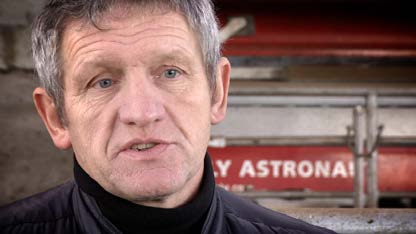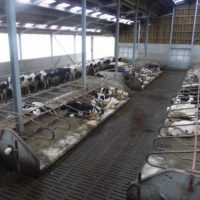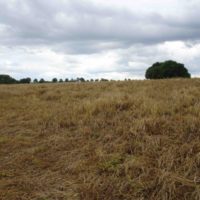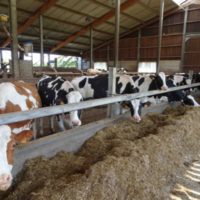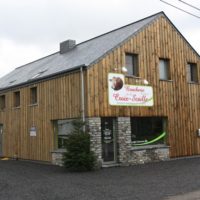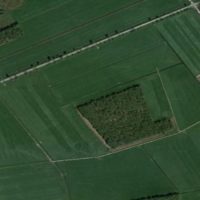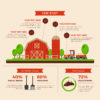Description
Background
In Joubiéval, the Willem family has raised dairy cows from father to son for generations.
The farm of Jean-Claude Willem, recently transmitted to his son Jerome, has 160 ha of UAA, mainly in forage crops and mostly in permanent (80ha) and temporary (50 ha) grasslands. Small areas provide cereals (20 ha) and 4 ha of semi-sugar beet, ie 1.1 LU / ha UAA (1.3 / ha grassland). The semi-sugar beets are established after temporary meadows (10 years) and are followed for three years by cereals before being again temporary meadows.
The Holstein breed now has 165 lactating cows, 140 of which are permanently milked. The herd has also about 150 heifers and calves plus about 10 males.
In 2008 Jean-Claude and his son Jerome decide to automate all the repetitive tasks They opt for more modern installations to improve their working conditions and the well-being of their animals. They introduce a project for help to modernize their farm in order to expand the livestock.
The development plan materialized in 2010, with the construction of a new barn of more than 1,500 m², the expansion of livestock effluent storage facilities and the purchase of two milking robots.
While automating the farm, Jean-Claude and his son Jérôme also wanted to combine pasture and robot to develop the grass, important constituent of rations of dairy cows, whether in the form of preserved fodder or grazed fresh grass. Pasture grazing (wire in the front-back) was adopted to encourage cows to exit the barn. And indeed 95% of cows come out of the barn.
Temporary and permanent grasslands are fertilized as follows:
- 250 kg of mineral nitrogen in the spring +150 kg of nitrogen at each cut (average 2 cuts / year) + manure (9 tonnes or 40 kg of nitrogen) as soon as possible (January 15);
- No phosphorus intake, but lime intake on 30% of the surface each year;
- 10 tons of kainite (natural compound fertilizer) every 5 years.
The essential equipment used on the farm is in CUMA (Cooperative Use of Agricultural Equipment).
Detailed description
The innovations developed within the farm are of two complementary types: Agro-equipment for automation of repetitive tasks through the use of robots and the implementation of a successful grazing management system.
Jean-Claude Willem and Jérôme have sought to automate as much as possible the demanding work of their breeding: cleaning and scraping slurry, feeding livestock (Automatic Milk Distributor for calves, Automatic Concentrate Distributor for cows, Automatic Feed Distributor for dry cows and calves, parameterisation and monitoring by collar) and milking.
To encourage the animals to go out and graze, the rotational grazing on 1 day proved an excellent technique (attraction / appetence of the young grass). The controls associated with the machines also offer precise and remote survey of the sanitary and production parameters.
The farm was monitored in the framework of the European project “Autograssmilk”.
Thanks to these different automations, the working conditions have been improved and the management of the farm is more efficient, both for the productivity of the meadows and the milk collected. Animal health is also better monitored.
Grasslands, mostly permanent, are almost all (96%) both grazed and mowed (3-4 times a year). The permanent grasslands are composed of white clover, English ryegrass, timothy grass, cocksfoot, while the temporary meadows are composed of white and purple clover, pure alfalfa, English raygrass and Italian raygrass. The duration of permanent meadows is greater than 10 years. The rotational grazing over a day (front and back wires) is preferred, it lasts about 7 months per year. The grass is ensiled and wrapped for winter storage, but hay is harvested when the weather permits.
The ration of cows, consisting mainly of grass, hay and / or silage is supplemented by cereals (3 kg per cow / day), semi-sugar beets (8kg / cow / day in winter) and grain corn (1 kg / cow / day).
Jean-Claude also practices oversowing (aggressive English raygrass and white clover) through the use of an electric seeder located at the front of the tractor, after dung removal.
In order to optimize the grazing lands of the farm, they started on a rotational grazing system, a technique inspired by a study trip to Ireland.
The automation concerns the following tasks: cleaning and scraping slurry, feed (milk / calf, concentrate, parameterized by collar) and milking (collar). Rotating pasture (1day). Remote control of production and sanitary parameters.
Results
All repetitive tasks are automated:
- Milking robots
- Robot for cleaning gratings
- Robot for forage tracking
- AMD for calves
- AFD for calves up to 9 months
- AFD for dry cows
- AFD for cows to fatten
This automation allows for less repetitive and less stressful work, which can be measured qualitatively and quantitatively. Automation provides the farmer with the levers (decision support tools) on which to act to improve his farm, allows a better health monitoring of the herd (individualized monitoring of each cow) and an improvement of the production (average of 9.080 kg of milk / cow / in 2017 (official milk control) at 40% fat and 35% protein – 2.6 milking / day). Herd turnover rate is 28%.
The use of milking robots and feed supply is common in breeding in stabling. Associated with Rotational stocking techniques, automation is perfectly compatible with grazing. If this technique was the subject, at the beginning of some trial and error, it is now perfectly controlled.
In terms of profitability, energy costs are to be monitored. They are likely to be covered in the future via a biomethanisation project.
Adoption criteria
Automation is allowed by new and well-adapted buildings. Rotational grazing requests grasslands accessible from the barn and the installation of water points. The implementation of automated systems completely changed the way of working and called for a sometimes difficult adaptation period.
The adoption / adaptation of robots requires the advice of qualified persons.
The management of the rotational grazing is based on the herbometer, which becomes useless after three years.
The adoption of innovation requires an open mind to challenge itself to regularly analyse its operating system. Automation provides a significant amount of data that needs to be mastered.
Future prospects
The possible improvements concern:
- an optimal feeding of the animals to better respect the feed cycles of the latter, in particular via the use of feeding robot contained in each batch of cows;
- Continuous improvement of animal hygiene, reduce the use of antibiotics;
- A reduction of the energy bill via probably the realization of a biomethanisation project.
- The price of milk paid to the farmer (€ 0.39 / litre included VAT) remains just above the cost of production. This price is therefore still a threat for Walloon dairy farms. The milk produced is currently delivered to a dairy, but could in the future fuel a collective project.
Threats and risks relate more to the decline in meat consumption, societal pressures on agricultural activity and low indexation of agricultural prices.
In addition, studies evaluating the sustainability of grassland farming involving pasture and robots should be continued.

